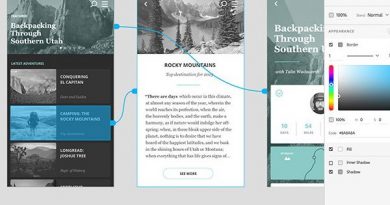Empathic Design Approach to User-Centred Design
In his book “Change by Design,” Tim Brown describes empathy as “the mental habit that moves us beyond thinking of people as laboratory rats or standard deviations.” Unlike marketing research that deals with numbers and facts, empathic design tries to meet users’ needs and even thinks about what they may need to make their lives much more accessible. Empathic design aims to build an emotional relationship between the end consumer and the product by better understanding the user experience and users’ needs at an early stage of new product development (NPD).
While other marketing methods prioritise the product and its sales, empathic design prioritises the end user and building an emotional connection between the consumer and the product. Putting the consumer first is a vital marketing objective of empathic design as we apply it in the design thinking such as the Double Diamond Design Thinking.
What is Empathic Design?
Empathic design is an approach in the design thinking process that adopts a user-centred design approach. But as the name implies, it focuses on the emotional relationship between the user and the product or the service. Think of how you may like a specific cafe shop such as Starbucks where service design is used as a method to understand user emotions and build compassion and insight about their sentimental experience to ensure all the stores reflect them in the design solutions embedded in the service. Unlike the old mindset in traditional market research, to achieve empathic design, we need a design thinking mindset to understand user needs through ideation, prototyping and building empathy mapping to reflect these needs on the final product (check What is Kano Model Analysis? And How to Conduct it.).

The Benefits of Empathic Design
Beyond its simple aim of creating an emotional relationship between the consumer and the product, empathic design can help companies in multiple disciplines. Conducting the proper research to target empathic design can build this connection and help a company innovate new products or solutions for problems the user never asked for, or thought could be solved. For some products, innovation does not require creating a new product but improving an existing one to meet current consumer needs. From a marketing context, empathic design can help acquire market segments by exploring the unexpected and unmet needs of the end consumer and ensuring diversity and user inclusion.
How to achieve Empathic Design?
While designers should be good at understanding the problems or projects at hand, empathic design methodologies focus even more on understanding the end user’s or possible undiscovered needs. This understanding can be achieved through several methods, including asking questions about user behaviour. As the empathic design is closely related to human-centred design, similar questions can be asked in both approaches. To achieve a human-centred design approach, three main questions should be asked, according to The Golden Circle concept discussed by Thomas and McDonagh in their research, “Empathic Design: Research Strategies,” published in The Australasian Medical Journal:
- Why are we achieving this specific goal?
- How can we accomplish this goal?
- What is the outcome after achieving this goal?
One of the companies that applied empathic design with human needs in mind was Danone. In 1996, Danone partnered with Grameen to build a yoghurt manufacturing plant in the Bogra District of Bangladesh. The project aimed to help supplement Bangladeshi children’s dietary deficiencies (addressing the why). Building this plant and recruiting community-wide support for its operation was the method to achieve this goal (addressing the how). The project’s outcome is clearly evident in employees’ pride over their positive impact on other people. This example and similar experiences were discussed further by Battarbee, Suri, and Howard in their IDEO paper, “Empathy on the Edge.”

This experience reflects positively on the community and the organisation; Danone project manager Marie Soubeiran noted the impact “has transformed Danone culturally.”
Empathic design requires designers to put themselves in the shoes of end users and consider what they need and what results will be produced, as described in the Empathy on The Edge (PDF) published by the IDEO: “People who cannot temporarily let go of their role or status or set aside their expertise or opinion will fail to empathise with others who have conflicting thoughts, experiences, or mental models.”
The Impact of Empathic Design in the Rise and Fall of Software Design
In light of my digital design background, empathic design also plays an essential role in the software niche, which should have been mentioned during my research on this topic. In an age of social networking and building web applications that attract billions of users, as in the case of Facebook and Twitter, empathic design is critical to the design process.
In every digital design project, user experience (UX) research evaluates the end user and contributes significantly to building social applications that meet end users’ needs. Some software applications need to achieve this goal. At the same time, other user interfaces outperform their competitors and achieve a strong emotional relationship with their users, similar to the success of Apple software and hardware products.
In the 1990s, Facebook and MySpace began as digital tools to extend social interaction. Facebook attracted more users because its frequent updates to the user interface provided users with what they needed from a social networking application.
Conclusion
Empathic design bridges the wide process gap between the designer and the end user and allows designers to put themselves in the end user’s shoes. This helps better understand consumer needs and opens new marketing opportunities. Applying design empathy requires methodologies that involve asking questions and trying to understand the end user.
While empathic design is applied to digital and interactive design through user experience studies, there needs to be more research on digital design processes that follow empathic design approaches.
Further readings:
Empathy on the Edge PDF (2014) by Battarbee K., Suri J., and Howard S. (IDEO)
Change by Design (2014) by Brown, T. (IDEO)
Spark Innovation Through Empathic Design by Leonard D. and Jeffrey R. (Harvard Business Review)






